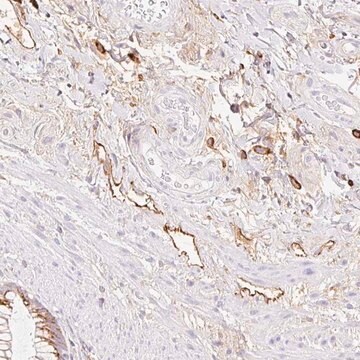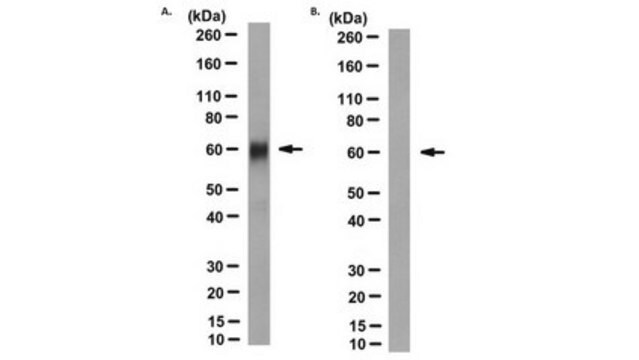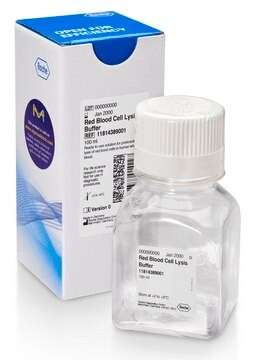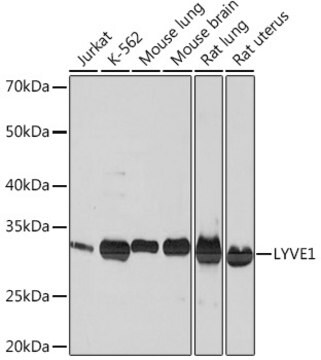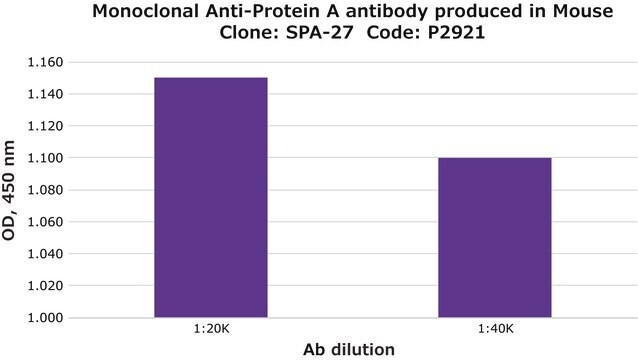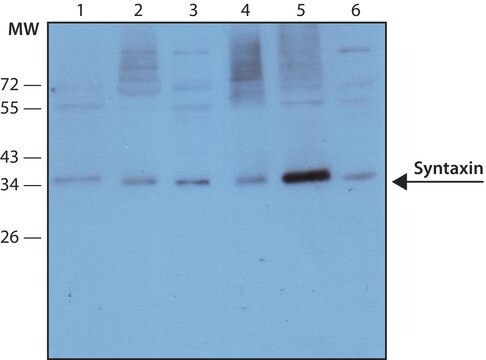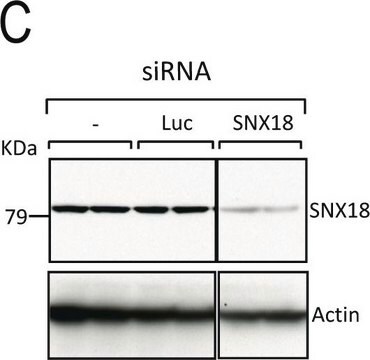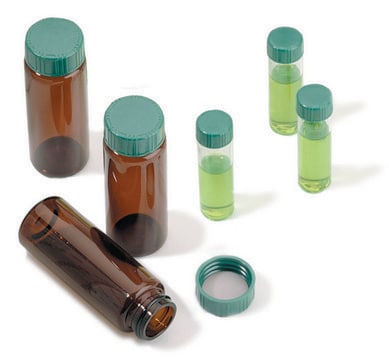おすすめの製品
由来生物
rabbit
結合体
unconjugated
抗体製品の状態
affinity isolated antibody
抗体製品タイプ
primary antibodies
クローン
polyclonal
フォーム
buffered aqueous solution
分子量
~40 kDa
交差性
mouse, human, rat
濃度
1 mg/mL
テクニック
western blot: 1:500-1:1000
アイソタイプ
IgG
免疫原配列
(K-N-Q-Q-K)
NCBIアクセッション番号
UniProtアクセッション番号
輸送温度
wet ice
保管温度
−20°C
ターゲットの翻訳後修飾
unmodified
遺伝子情報
human ... LYVE1(10894)
詳細
LYVE-1 (lymphatic vessel endothelial hyaluronan receptor 1) is a type I integral membrane polypeptide. It is present on lymph vessel endothelial cells of both normal and neoplastic tissues. LYVE consists of a single N-terminal HA binding domain. It is mapped to human chromosome 11p15.
Lymphatic vessel endothelial hyaluronan receptor 1 (LYVE1), also known as CRSBP, is encoded by the gene localized on human chromosome 11p15.4. The encoded protein is mainly mapped to the plasma membrane as well as intracellular fibrillar structures in lymphatic endothelial cells (LECs), including primary human dermal LECs and SVEC4-10 cells. LYVE1 belongs to the link module superfamily of C-type lectins.
免疫原
Peptide sequence around aa. 271-275 (K-N-Q-Q-K), according to the protein LYVE1.
生物化学的/生理学的作用
LYVE-1 (lymphatic vessel endothelial hyaluronan receptor 1) plays an important role in hyaluronan homeostasis. It controls cellular trafficking of the lymph nodes. It serves as an important lymphatic vessel marker.
Lymphatic vessel endothelial hyaluronan receptor 1 (LYVE1) induces activation of its ligand, platelet-derived growth factor (PDGF), vascular endothelial growth factor (VEGF)-A and hyaluronic acid, opens lymphatic intercellular junctions in vitro and in vivo by enhancing contraction of lymphatic endothelial cells (LECs). The encoded protein also facilitates uptake of hyaluronan (HA) and trafficking of leukocytes to draining lymph nodes.
特徴および利点
Evaluate our antibodies with complete peace of mind. If the antibody does not perform in your application, we will issue a full credit or replacement antibody. Learn more.
ターゲットの説明
Ligand-specific transporter trafficking between intracellular organelles (TGN) and the plasma membrane. Plays a role in autocrine regulation of cell growth mediated by growth regulators containing cell surface retention sequence binding (CRS). May act as an hyaluronan (HA) transporter, either mediating its uptake for catabolism within lymphatic endothelial cells themselves, or its transport into the lumen of afferent lymphatic vessels for subsequent re-uptake and degradation in lymph nodes.
物理的形状
PBS(0.02% アジ化ナトリウム、50% グリセロール含有)
免責事項
Unless otherwise stated in our catalog or other company documentation accompanying the product(s), our products are intended for research use only and are not to be used for any other purpose, which includes but is not limited to, unauthorized commercial uses, in vitro diagnostic uses, ex vivo or in vivo therapeutic uses or any type of consumption or application to humans or animals.
適切な製品が見つかりませんか。
製品選択ツール.をお試しください
保管分類コード
10 - Combustible liquids
WGK
WGK 1
引火点(°F)
Not applicable
引火点(℃)
Not applicable
最新バージョンのいずれかを選択してください:
High LYVE-1-positive lymphatic vessel numbers are associated with poor outcome in breast cancer
Bono P, et al.
Clinical Cancer Research, 10(21), 7144-7149 (2004)
Homodimerization of the Lymph Vessel Endothelial Receptor LYVE-1 through a Redox-labile Disulfide Is Critical for Hyaluronan Binding in Lymphatic Endothelium
Banerji S, et al.
The Journal of Biological Chemistry, 291(48), 25004-25018 (2016)
LYVE-1, a new homologue of the CD44 glycoprotein, is a lymph-specific receptor for hyaluronan
Banerji S, et al.
The Journal of Cell Biology, 144(4), 789-801 (1999)
Identification of a three-gene expression signature of poor-prognosis breast carcinoma
Bieche I, et al.
Molecular Cancer, 3(1), 37-37 (2004)
Romain Parent et al.
Biochemical and biophysical research communications, 450(1), 7-12 (2014-05-24)
The endothelium lines blood and lymph vessels and protects underlying tissues against external agents such as viruses, bacteria and parasites. Yet, microbes and particularly viruses have developed sophisticated ways to bypass the endothelium in order to gain access to inner
ライフサイエンス、有機合成、材料科学、クロマトグラフィー、分析など、あらゆる分野の研究に経験のあるメンバーがおります。.
製品に関するお問い合わせはこちら(テクニカルサービス)

